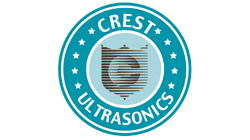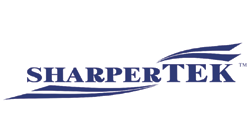An Ultrasonic Jewelry Cleaner
Fast, Thorough, Safe
Maintaining or restoring the sparkle and shine of fine jewelry is best accomplished with an ultrasonic jewelry cleaner. The process is fast, thorough and safe for gold, silver, platinum, other precious metals as well as gemstones*. An ultrasonic jewelry cleaner eliminates tiresome, time-consuming soaking, brushing and other manual methods that fail to remove oils, dirt and other dulling contaminants from intricate surfaces.
Are You a Prospect for an Ultrasonic Jewelry Cleaner?
You may be if you fall into one or more of these categories:
- Own and wear a wide variety of jewelry
- Collect antique or estate jewelry as a hobby
- Clean customers' jewelry as a service of your retail jewelry store
- Buy and sell consignment jewelry
- Manufacture jewelry and must remove paste and polishing compounds
When you use an ultrasonic jewelry cleaner jobs are completed in a few moments without damage that may occur from brushing or other mechanical means, and without residues that may result from certain chemical jewelry cleaners.
How an Ultrasonic Jewelry Cleaner Works
Ultrasonic cleaners offered by iUltrasonic are comprised of a stainless steel tank to which are mounted generator powered ultrasonic transducers. These are designed to vibrate at an ultrasonic frequency such as 37,000 cycles per second or 37 kHz. This is above the range of human hearing.
Tanks are filled with a cleaning solution formulated for the particular task at hand. Today most ultrasonic cleaning solutions are biodegradable, which eliminates or reduces disposal concerns. They are also offered as concentrates, with dilution instructions provided. More on this later.
When activated by the control panel the transducers cause the bottom of the tank to vibrate as a membrane. This vibration creates billions of microscopic vacuum bubbles in the cleaning solution. The bubbles implode against surfaces immersed in the cleaning solution. This is called ultrasonic cavitation.
The process loosens and carries away contaminants on surfaces immersed in the cleaning solution. Because the bubbles are so small they penetrate the most intricate crevices in jewelry.
This makes the jewelry cleaning process much faster and more thorough than mechanical/manual cleaning.
Why an Ultrasonic Cleaner is the Best Jewelry Cleaner
Here are 6 good reasons to consider an ultrasonic jewelry cleaner:
- Speed
When it comes to jewelry cleaning “time is money.” An ultrasonic jewelry cleaner helps manufacturers deliver clean products to retailers. Retailers use them to serve customers purchasing products, to clean customers' products, or to prepare neglected estate jewelry for auction or resale. - Safe
Ultrasonic cleaning is damage-free cleaning. Brushes, abrasives and other mechanical methods can result in scratches and possible deformation of highly polished surfaces and delicate configurations*. - Economical
By lowering the time for jewelry items to reach wholesale customers or serve retail customers' jewelry cleaning requests, the ultrasonic cleaning process makes these machines a money-saving investment. - Environmentally Friendly
Ultrasonic jewelry cleaning solutions are biodegradable, eliminating or reducing disposal concerns of spent cleaning solutions. - Precise
Many valuable jewelry items have the highly intricate designs. Necklaces, bracelets, brooches, rings and similar items have crevices that trap dirt, dust and other contaminants. Ultrasonic cavitation action reaches and thoroughly cleans these areas. - Value
Jewelers grade their diamonds according to four major criteria: cut, color, clarity and carats.
Another “C” can also affect the perceived value of diamonds: cleanliness. A customer will view an otherwise perfect diamond with a stain or smudge as having less value than a pristine, sparkling stone. A bath in an ultrasonic jewelry cleaner can remove many of the external imperfections that may cling to precious stones.
Choosing an Ultrasonic Jewelry Cleaner
For Retailers, Collectors and Consignment Shops
Ultrasonic cleaners are offered in a variety of sizes and shapes. Examples include the Elmasonic E+ series offered by iUltrasonic in 9 tank sizes from 0.25 to 7.5 gallons.
These units feature the widely used 37 kHz ultrasonic frequency ideal for many cleaning tasks, a unique "Dynamic" mode for removing adherent contaminants, an "Eco" mode for delicate jewelry and an automatic "Sweep" mode to assure products are uniformly and safely cleaned.
For Jewelry Manufacturers
Jewelry manufacturers producing products on an assembly-line basis such as class rings, fraternal pins and other items for the mass market rely on ultrasonic cleaners that operate continuously.
The task here is to safely remove polishing pastes and other tenacious residues deposited during the manufacturing operations.
Elma xtra TT ultrasonic cleaners offered by iUltrasonic in 4 tank sizes from 0.8 to 4.8 gallons are good candidates to solve production line jewelry cleaning tasks. Operating at timed cycles to 30 minutes or continuously for up to 8 hours, the 37 kHz xtra TT ultrasonic cleaners feature continuous "Sweep" for uniform cleaning and a user-activated "Dynamic" mode to remove particularly tenacious contaminants.
Ultrasonic Jewelry Cleaning Solutions
Earlier we mentioned cleaning solutions formulated for tasks at hand. A good recommendation is JewelryClean S8 concentrate. It is available in quart bottles with a recommended dilution to 2 to 5% with water. Add water and the correct amount of concentrate to the tank.
If you are using an Elma E+ or xtra TT unit activate the Dynamic mode for a short period of time to mix and degas the solution.
Ultrasonic Cleaning Accessories
Ultrasonic jewelry cleaning is accomplished in baskets that may be provided with the unit or offered as an accessory. Useful accessories are jewelry racks suspended in the cleaning solution. Fine mesh baskets for very small items can be placed in regular baskets or otherwise suspended in the cleaning solution.
Tips on Ultrasonic Jewelry Cleaning
Do not overload the basket. Avoid contact between parts being cleaned - especially if they are of soft metals. It is better to clean a small number of items at a time.
The cleaning solution should be replaced when cleaning cycles get longer. Drain the tank and dispose of the solution according to local regulations, thoroughly rinse the tank with clean water and prepare a new batch.
Read and follow the manufacturer's user guide for ultrasonic cleaner operation and maintenance.
Considerations for Selecting an Ultrasonic Jewelry Cleaner
We've touched briefly on features offered by two candidates - one for retailers, collectors and consignment shops, and the other for jewelry manufacturers.
There are other considerations as well, some of which may lead you to other models. As a tutorial, we suggest you read our more detailed post on ultrasonic cleaning: an in-depth look.
Questions?
Contact the scientist at iUltrasonic for recommendations on the proper ultrasonic cleaner to meet your jewelry cleaning requirements or for other ultrasonic cleaning applications.
*Fragile or soft stones such as pearls, opals, emeralds and amber should not be cleaned with ultrasonics.






